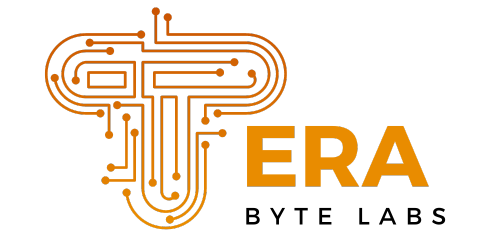Stylists often face packed schedules, last-minute changes, and the challenge of balancing client needs with personal time. Traditional methods of managing appointments can create stress and leave little room for flexibility. Modern scheduling software helps stylists balance their workflows by organizing appointments, reducing no-shows, and creating more control over their day.
These tools do more than just book clients. They allow stylists to prioritize high-value services during peak hours, fill gaps with quick add-ons, and adjust smoothly when cancellations occur. As a result, stylists can focus on their craft instead of worrying about constant scheduling conflicts.
By using smarter systems, stylists gain a clearer view of their time and energy. The right setup supports productivity, prevents burnout, and creates space for both professional growth and personal balance. This shift turns scheduling from a daily struggle into a strategy that supports long-term success.
How Modern Scheduling Software Transforms Stylist Workflows
Modern scheduling software reshapes salon operations by cutting down on repetitive tasks, reducing errors in appointment management, and creating smoother coordination across staff calendars. It gives stylists more control over their time while helping clients receive a faster and more organized booking experience.
Automation of Scheduling Tasks
Stylists often lose time on manual appointment entry, phone calls, and back-and-forth confirmations. Automated scheduling tools take over these steps by allowing clients to book directly online through a simple interface. This reduces interruptions during the workday and helps stylists focus on services rather than administrative duties.
Features like automated reminders by text or email keep clients informed without extra effort from staff. This not only saves time but also minimizes forgotten appointments.
Many systems also connect with a salon booking website template, giving salons a professional online presence where clients can schedule services at any hour. This integration helps small businesses compete with larger salons by offering the same level of convenience.
Reduction of Scheduling Conflicts and No-Shows
Double bookings and last-minute cancellations create stress for stylists and reduce income potential. Scheduling software addresses these issues by blocking unavailable time slots and updating calendars in real time. This prevents overlapping appointments and gives staff a clear view of their daily workload.
Automated confirmations and reminders reduce the likelihood of no-shows. Clients receive alerts ahead of their appointment, which allows them to reschedule if necessary. As a result, stylists experience fewer gaps in their schedule and more consistent earnings.
Some systems also track client history, which helps staff identify repeat cancellations. With this insight, salons can enforce deposit policies or adjust booking rules to protect their time.
Calendar Integration for Seamless Coordination
Stylists often juggle multiple commitments inside and outside the salon. Calendar integration connects scheduling software with personal or team calendars, so staff can see all appointments in one place. This eliminates confusion about availability and avoids accidental overbooking.
Shared access allows managers to assign tasks, adjust shifts, or track staff hours without separate tools. Team members can view updates instantly, which improves communication and reduces scheduling errors.
For stylists who work across multiple locations, integrated calendars provide a single view of all commitments. This clarity helps them balance personal time with professional responsibilities more effectively.
Improving Productivity and Work-Life Balance for Stylists
Modern scheduling software helps stylists stay organized, reduce unnecessary stress, and create a healthier balance between work and personal life. By aligning staff availability with client demand, these tools improve productivity while also supporting fair workloads and greater job satisfaction.
Improved Time Management and Job Satisfaction
Stylists often juggle multiple appointments in a single day, and poor scheduling can lead to rushed services or idle gaps. Software that tracks booking patterns allows managers to assign the right number of shifts and match them with actual demand. This reduces wasted time and creates smoother daily workflows.
Better time management directly influences job satisfaction. Stylists who see their schedules organized around realistic workloads feel more in control of their day. They can focus on quality service instead of worrying about back-to-back overbooking or last-minute conflicts.
In addition, automated reminders and shift notifications cut down on miscommunication. Clear schedules help stylists prepare for each client with confidence, which improves both performance and morale.
Lower Overtime Costs and Increased Efficiency
Unplanned overtime often strains budgets and leaves staff exhausted. Scheduling software helps managers monitor hours in real time, so they can spot potential overtime before it becomes a problem. This prevents unnecessary labor costs while also protecting staff from burnout.
By aligning staff coverage with peak and slow periods, salons use their workforce more efficiently. For example, more stylists can be scheduled during high-demand evenings, while fewer are needed during quiet mornings. This balance avoids both understaffing and overstaffing.
Efficiency also improves because software reduces errors that occur with manual scheduling. Double bookings, missed shifts, and uneven workloads become less common, which saves time and lowers operational stress.
Supporting Work-Life Balance Through Flexible Scheduling
Stylists value flexibility as much as steady income. Scheduling software allows them to set availability, request time off, or swap shifts with ease. This flexibility helps them manage personal responsibilities without sacrificing income or client service.
Work-life balance improves because staff gain more control over their schedules. They can plan family events, rest days, or personal appointments without constant negotiation. This autonomy often leads to higher job satisfaction and lower turnover.
At the same time, managers maintain oversight through built-in rules that prevent coverage gaps. The balance between personal preference and business needs creates a healthier workplace culture where productivity and well-being both improve.
Conclusion
Modern scheduling software gives stylists more control over their time and workload. It helps them manage peak hours, reduce gaps in their day, and align services with client demand.
By using clear data and simple tools, teams can create fair schedules that balance business needs with personal preferences. This balance supports steady productivity while also reducing stress.
As a result, stylists can focus more on their craft and less on administrative tasks. The right scheduling approach keeps clients satisfied and helps salons maintain consistent growth.


